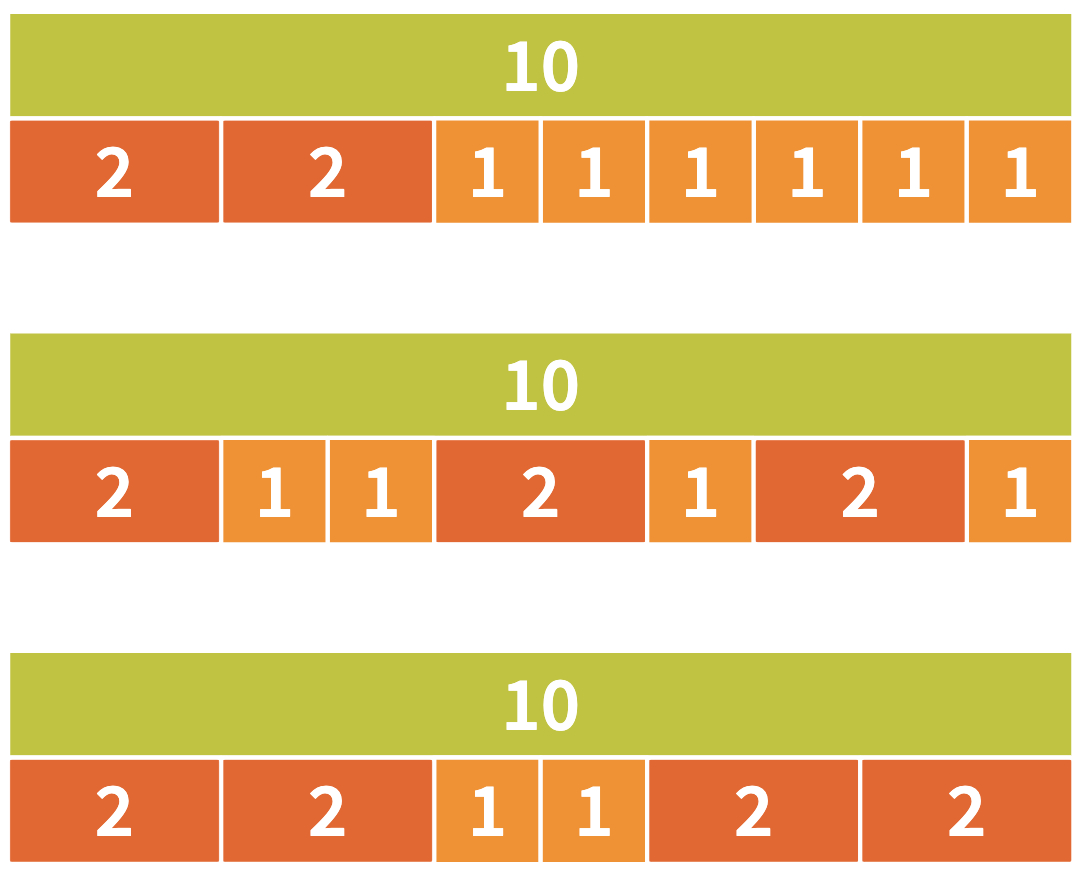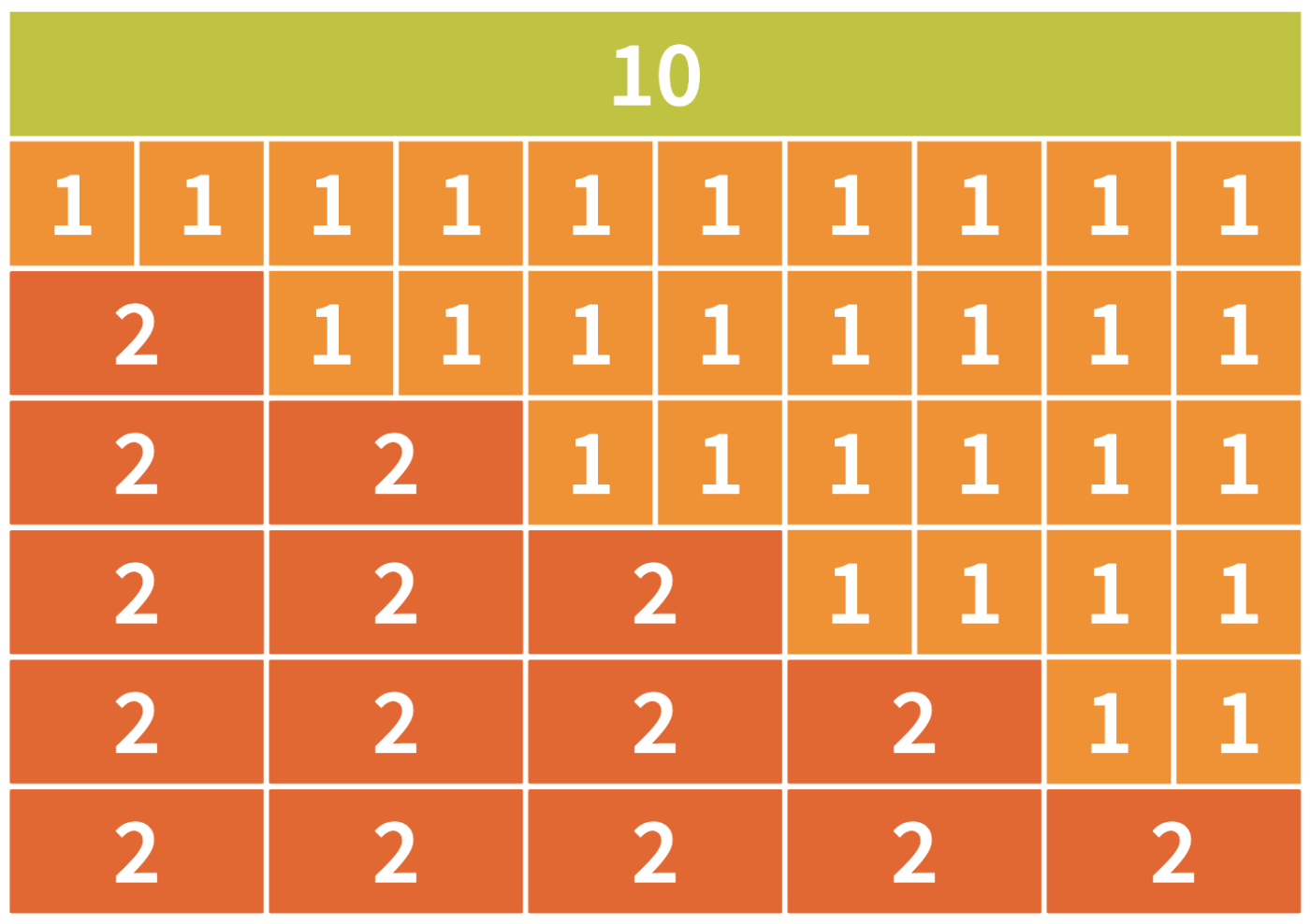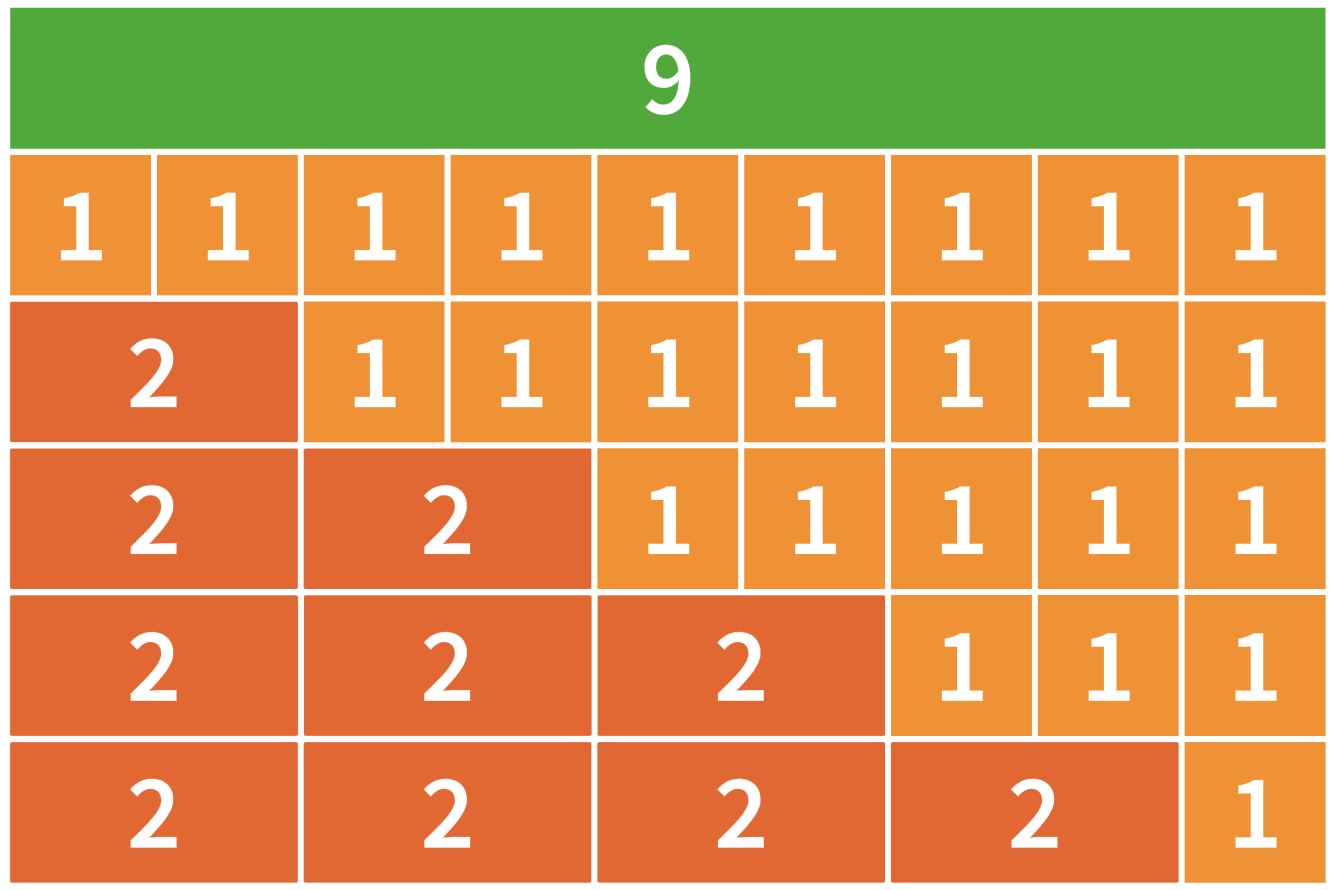Lesson outline
This task uses the Polypad number bars to help students to visualise making different amounts of money using 1p/1c and 2p/2c coins. Working on the task will help students improve their skills of working systematically. The results can lead to some interesting work on sequences. For some students, the task can lead to some programming or spreadsheet work as they explore how to automate solutions.
Lesson objective: Generate a sequence from a real-life context and describe a rule for the sequence.
Lesson activity
Warm-up
Show students a container or bag and tell them that you have some 1 cent (pence) and 2 cent (pence) coins in the bag and that the total value of all coins is 10 cents (pence). Ask students to write down a prediction of how many of both coins are in the bag. As a few students to share their prediction, and record their answers using the number bars in Polypad, as shown here:

If you don’t have access to suitable coins of values 1 and 2, just place some tape on other coins or counters, and write “1” and “2” on them.
Now reveal the actual breakdown of coins in the bag and see if anyone correctly predicted the numbers of each coin. Otherwise, also add the actual breakdown to the Polypad.
Save a link to your current Polypad canvas, and share it with all your students. Challenge them to use the number bars to find all possible ways of making 10 using just 1s and 2s. (If it is not possible to easily share a link with students, they can create their own Polypad.)
Once students think they have found all the possibilities, invite them to come up with a convincing argument explaining how they can be certain there are no more possibilities. An arrangement like this might be useful. If some students finish, as they are waiting, invite them to find all possibilities for another number of their choosing.

Finally, discuss how this image can be interpreted to lead to certainty that all possibilities were found. Conclude that students had a 1 in 6 chance of correctly predicting the breakdown of coins in the bag.
Main activity
Now show students another bag, also made up of only 1 and 2 coins – but that this time, the coins have a total value of 20. Ask students if they think this will be harder or easier to predict. Students will likely know this will be harder to predict because there are more combinations. Maybe take a vote whether the number of combinations is more or less than the number of students in the class.
Discuss the benefit of being able to determine the total number of combinations without having to list them all, and share this guiding question: How can we determine how many ways there are to use 1 and 2 coins to make any amount of money without having to list all possibilities?
Once again, students can pick a number bar of any length in Polypad, and then position all possible sums of 1s and 2s underneath. You can also combine multiple number bars to create numbers greater than 10.
You may have to remind students of the importance of working in a systematic way to make sure they don’t miss any combinations – the image from the warm-up could be used to suggest one possible system. Polypad’s “Save and Share” functionality can alsobe useful here: students just have to save their solutions, and then you can show some examples from your teacher dashboard, for the entire class to see.
As students find solutions, add their work to a table, and if some students are struggling with large numbers, encourage them to start with smaller ones.
After a few examples, students might not need to use the Polypad, and instead move on to a more abstract way of representing their findings. If certain numbers aren’t being worked on by students and are needed in the table to find a pattern, invite certain students to work on those numbers.
Possible Solutions
Here are the number of possibilities for different values of the bag:

Once students have enough results to spot a pattern, invite them to find a way to express this pattern as a general rule.
To help students, you could pick a much larger number (like 20) as an example, and ask them to explain how many possibilities there are – and how they know that. You can think about all the possible ways to use the 2 coin: initially, students may think there are 10 possibilities because 2 x 10 = 20, so you might have to remind them that this doesn’t account for the situation in which no 2 coins are used. So, the total is actually 11.
Students who have met algebra may wish to express their rule algebraically, and they will need to consider how to handle odd and even cases. Other students might express their rule in written language, for example:
- If the number is odd, add 1 and then divide by 2. If the number is even, divide by 2 and then add 1.
- Divide by 2 and ignore any remainder. Then add 1
It is important that students consider where this rule comes from. One way to explain it is by thinking about how many 2s there are in each arrangement.
Going back to the image from the warm-up, the six arrangements correspond to 0, 1, 2, 3, 4 and 5 twos appearing in the solution. This means that we need to find the number of 2s that go into our number, and then add on 1 more solution for the case where there are no twos.

For odd numbers, the rule is a bit different. For example, 9 divided by 2 is 4.5, but we can’t use “half” of a 2 coin. Therefore there are just four ways to use the 2 coins, plus one way of using no 2 coins.
End the lesson by concluding that there are 11 combinations with a value of 20. Ask students to make a final prediction and then reveal the combination you made in the bag.
Support and extension
To help students perceive the patterns involved, invite them to think about the smallest number of 2s needed to make each number and the largest number of 2s needed.
A nice extension is to start considering other coins. What if we include a 5p/5c coin too? What about a 10p/10c coin? For students who have done a little programming, they could start to think about how a computer program or spreadsheet can help us to find the solutions. If you want to set a particular challenge, you could ask them to find all the ways of making 26 using 1, 2 and 5 – there should be 45 ways.